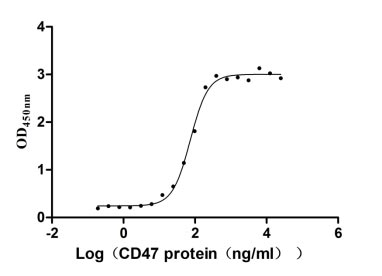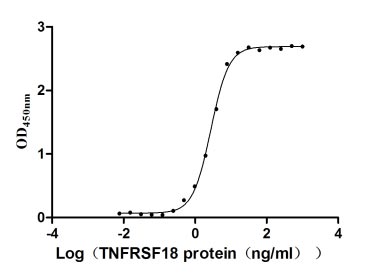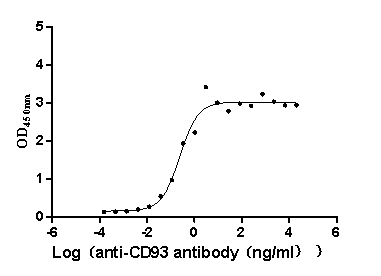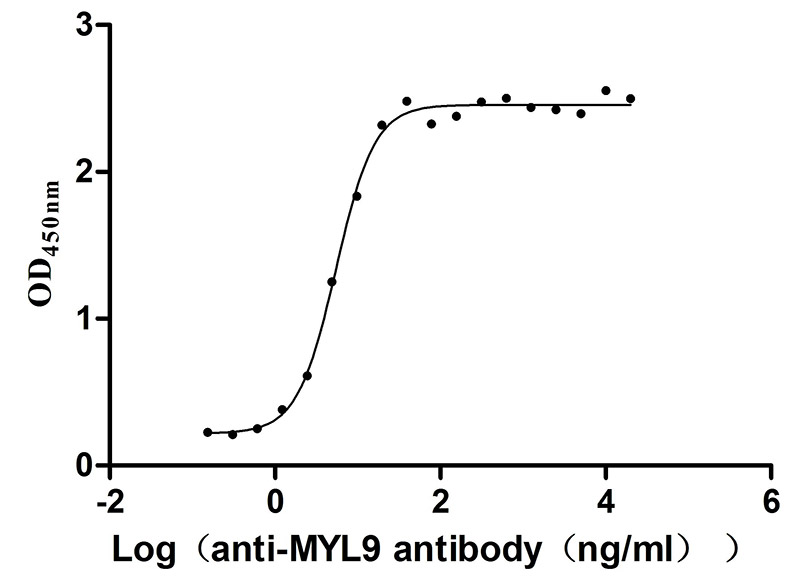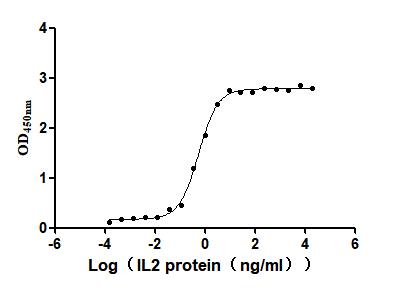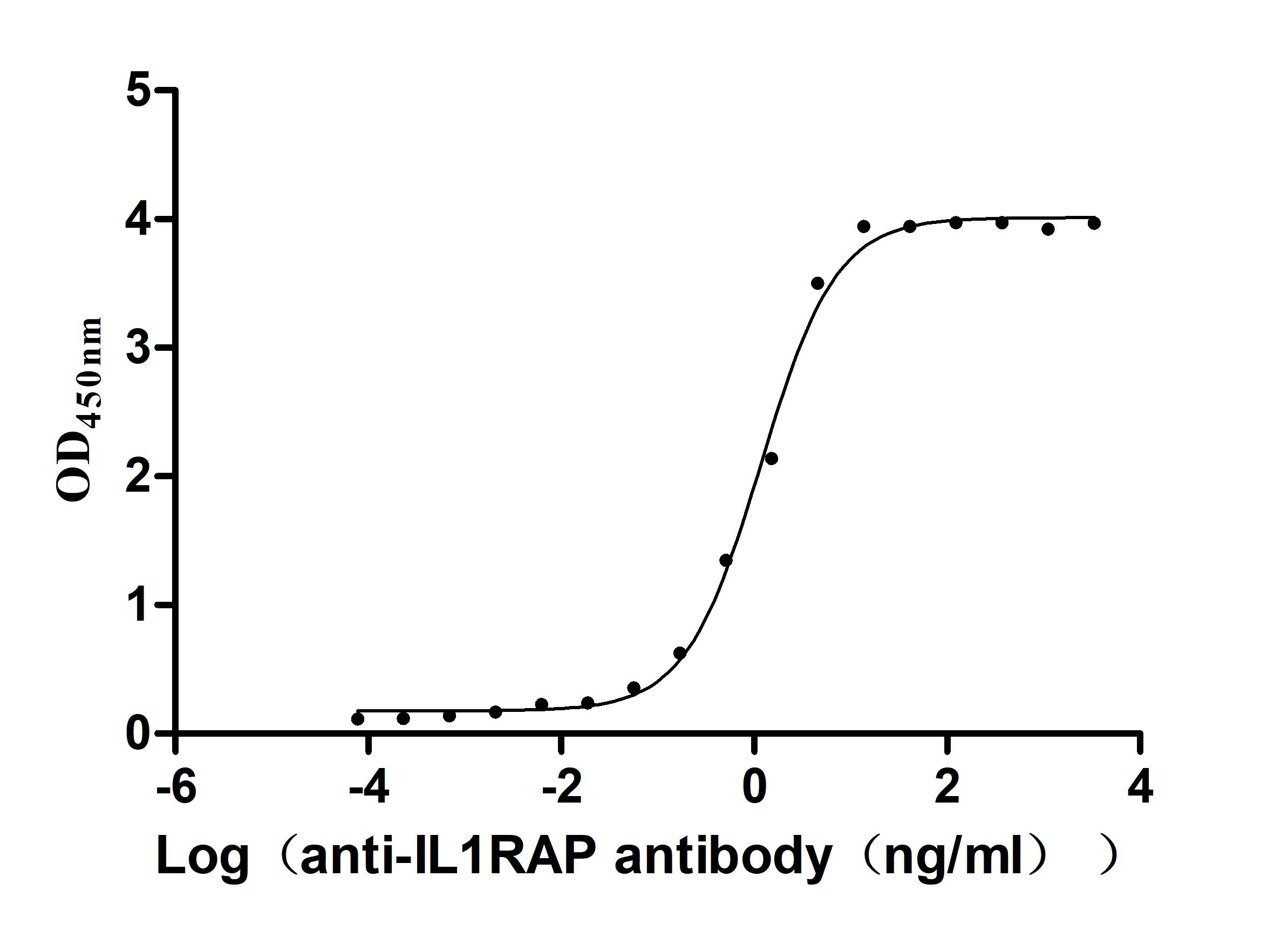Recombinant Drosophila melanogaster Protein toll (Tl), partial
-
中文名稱:黑腹果蠅Tl重組蛋白
-
貨號(hào):CSB-YP357533DLU
-
規(guī)格:
-
來源:Yeast
-
其他:
-
中文名稱:黑腹果蠅Tl重組蛋白
-
貨號(hào):CSB-EP357533DLU
-
規(guī)格:
-
來源:E.coli
-
其他:
-
中文名稱:黑腹果蠅Tl重組蛋白
-
貨號(hào):CSB-EP357533DLU-B
-
規(guī)格:
-
來源:E.coli
-
共軛:Avi-tag Biotinylated
E. coli biotin ligase (BirA) is highly specific in covalently attaching biotin to the 15 amino acid AviTag peptide. This recombinant protein was biotinylated in vivo by AviTag-BirA technology, which method is BriA catalyzes amide linkage between the biotin and the specific lysine of the AviTag.
-
其他:
-
中文名稱:黑腹果蠅Tl重組蛋白
-
貨號(hào):CSB-BP357533DLU
-
規(guī)格:
-
來源:Baculovirus
-
其他:
-
中文名稱:黑腹果蠅Tl重組蛋白
-
貨號(hào):CSB-MP357533DLU
-
規(guī)格:
-
來源:Mammalian cell
-
其他:
產(chǎn)品詳情
-
純度:>85% (SDS-PAGE)
-
基因名:Tl
-
Uniprot No.:
-
別名:Tl; CG5490; Protein toll; EC 3.2.2.6
-
種屬:Drosophila melanogaster (Fruit fly)
-
蛋白長度:Partial
-
蛋白標(biāo)簽:Tag?type?will?be?determined?during?the?manufacturing?process.
The tag type will be determined during production process. If you have specified tag type, please tell us and we will develop the specified tag preferentially. -
產(chǎn)品提供形式:Lyophilized powder
Note: We will preferentially ship the format that we have in stock, however, if you have any special requirement for the format, please remark your requirement when placing the order, we will prepare according to your demand. -
復(fù)溶:We recommend that this vial be briefly centrifuged prior to opening to bring the contents to the bottom. Please reconstitute protein in deionized sterile water to a concentration of 0.1-1.0 mg/mL.We recommend to add 5-50% of glycerol (final concentration) and aliquot for long-term storage at -20℃/-80℃. Our default final concentration of glycerol is 50%. Customers could use it as reference.
-
儲(chǔ)存條件:Store at -20°C/-80°C upon receipt, aliquoting is necessary for mutiple use. Avoid repeated freeze-thaw cycles.
-
保質(zhì)期:The shelf life is related to many factors, storage state, buffer ingredients, storage temperature and the stability of the protein itself.
Generally, the shelf life of liquid form is 6 months at -20°C/-80°C. The shelf life of lyophilized form is 12 months at -20°C/-80°C. -
貨期:Delivery time may differ from different purchasing way or location, please kindly consult your local distributors for specific delivery time.Note: All of our proteins are default shipped with normal blue ice packs, if you request to ship with dry ice, please communicate with us in advance and extra fees will be charged.
-
注意事項(xiàng):Repeated freezing and thawing is not recommended. Store working aliquots at 4°C for up to one week.
-
Datasheet :Please contact us to get it.
靶點(diǎn)詳情
-
功能:Receptor for the cleaved activated form of spz, spaetzle C-106. Binding to spaetzle C-106 activates the Toll signaling pathway and induces expression of the antifungal peptide drosomycin. Component of the extracellular signaling pathway that establishes dorsal-ventral polarity in the embryo. Promotes heterophilic cellular adhesion. Involved in synaptic targeting of motoneurons RP5 and V to muscle 12 (M12); functions as a repulsive cue inhibiting motoneuron synapse formation on muscle 13 (M13) to guide RP5 and V to the neighboring M12, where its expression is repressed by tey. May also function in embryonic neuronal survival and the synaptic targeting of SNa motoneurons.
-
基因功能參考文獻(xiàn):
- The Toll pathway is dimorphic in genome-wide constitutive gene expression and in induced response to infection PMID: 29268741
- Cic regulated spatially restricted expression of Toll/IL-1 signaling targets in Drosophila embryogenesis. PMID: 29432195
- These data further establish a regulatory network where co-activation of Toll/NF-kappaB and EGFR signaling by reactive oxygen species levels in the posterior signaling center niche controls lymph gland hematopoiesis under parasitism. PMID: 29091025
- These findings highlight a role for Sherpa in Drosophila host defense and suggest the SUMOylation-mediated regulation of dMyd88 functions in Toll innate immune signaling. PMID: 26508789
- The crystal structure of a 1:1 (nonsignaling) complex of the full-length Toll receptor ectodomain (ECD) with the Spatzle cystine knot domain dimer, is reported. PMID: 24733933
- The asymmetric binding mode of Spz to Toll is similar to that of nerve growth factor (NGF) in complex with the p75 neurotrophin receptor but is distinct from that of microbial ligands bound to the Toll-like receptors. PMID: 24282309
- These results suggest a novel function of retromer in regulating Toll pathway and innate immunity at a step that modulates ligand processing or activity. PMID: 24343480
- Using the Drosophila model and mutations in the Toll and Imd pathways, authors showed that neither pathway is required for expression of the dengue virus-blocking phenotype in the Drosophila host. PMID: 23986574
- Crystal structure of the N-terminal domain of Toll. PMID: 23245851
- The Toll pathway restrains Candida glabrata proliferation; however, wild-type flies containing C. glabrata systemic infections are unable to kill the injected yeasts. PMID: 23401590
- This study reviews the Toll pathway in the current literature and compares Drosophila Toll and mammalian NF-kappaB pathways. PMID: 21209287
- Data show that D-alanylated wall teichoic acid of S. aureus mitigates a Toll-mediated humoral response in Drosophila. PMID: 20639481
- the Spatzle prodomain masks a predominantly hydrophobic region of Spatzle and proteolysis causes a conformational change that exposes determinants that are critical for binding to the Toll receptor PMID: 20378549
- Is activated by Gram-positive bacteria through a circulating peptidoglycan recognition protein. PMID: 11742401
- The Toll and Imd pathways are the major regulators of the immune response in Drosophila PMID: 12032070
- The role of Pelle kinase and Twist in the Toll signaling pathway that specifies patterning thresholds of gene expression PMID: 12091311
- signal transduction by the Toll protein requires heterotrimer formation PMID: 12351681
- Gram-negative diaminopimelic acid-type peptidoglycan is the most potent inducer of the Imd pathway and that the Toll pathway is predominantly activated by Gram-positive lysine-type peptidoglycan. PMID: 12692550
- Results show that the directed expression of Vpu in fat body cells affects Drosophila antimicrobial responses, and that Vpu specifically affects Toll pathway activation by inhibiting Cactus degradation. PMID: 12973300
- A genetic analysis was made of Tl to larval hemocyte concentration and the egg encapsulation response. PMID: 15082553
- Multimerization may be a regulated, essential step for Toll-receptor activation. PMID: 15197269
- The discovery of Toll as a key regulator of Drosophila immune responses and its implications for mammalian immunology are reviewed. PMID: 15229471
- findings implicate Toll as a critical cell adhesion molecule in the alignment and migration of cardioblasts during dorsal vessel morphogenesis PMID: 15870289
- results suggest that activation of Toll is an allosteric mechanism induced by an end-on binding mode of its ligand Spz PMID: 18347020
- The Tl-->NFkB signaling actively promotes the process of human Alphabeta42 induced cell death and tissue degeneration in flies. PMID: 19088848
- Spn5 is a regulator of the Toll pathway and CHMP2B toxicity and the Toll pathway is a major signaling pathway misregulated by mutant CHMP2B in vivo. PMID: 19581577
顯示更多
收起更多
-
亞細(xì)胞定位:Cell membrane; Single-pass type I membrane protein. Cytoplasm.
-
蛋白家族:Toll-like receptor family
-
組織特異性:In early embryos, concentrated in the pseudocleavage furrows that form transiently between nuclei before cellularization and in the cleavage furrows during cellularization (at protein level). Later, found on cells in the mesectoderm, stomodeum, proctodeum
-
數(shù)據(jù)庫鏈接:
Most popular with customers
-
Recombinant Human Leukocyte surface antigen CD47 (CD47), partial (Active)
Express system: Mammalian cell
Species: Homo sapiens (Human)
-
Recombinant Human Tumor necrosis factor receptor superfamily member 18 (TNFRSF18), partial (Active)
Express system: Mammalian cell
Species: Homo sapiens (Human)
-
Recombinant Macaca fascicularis CD93 molecule (CD93), partial (Active)
Express system: Mammalian cell
Species: Macaca fascicularis (Crab-eating macaque) (Cynomolgus monkey)
-
Recombinant Human Myosin regulatory light polypeptide 9 (MYL9) (Active)
Express system: Yeast
Species: Homo sapiens (Human)
-
Recombinant Human Interleukin-2 (IL2) (Active)
Express system: Mammalian cell
Species: Homo sapiens (Human)
-
Recombinant Human Interleukin-1 receptor accessory protein (IL1RAP), partial (Active)
Express system: Mammalian cell
Species: Homo sapiens (Human)


